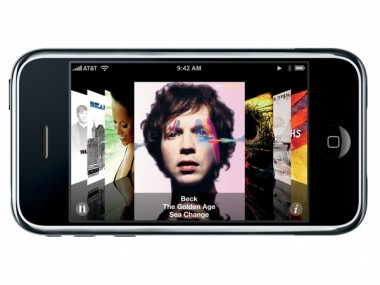The iPhone at 4: A Look Back and Forward
There’s no question that the iPhone has made quite an impact since its debut four years ago.
It has upended the cellular market and transformed Apple into the most profitable and valuable phone maker in the world. To truly understand the iPhone’s impact, it is worth looking back at just where the smartphone market was when Apple shipped its first iPhone.

The market consisted of BlackBerrys, Palms and Windows Mobile devices in North America, and a slew of Symbian devices in Europe. Those handhelds drew their power from combining a phone with a digital organizer and email capabilities.
The iPhone that went on sale at 6 p.m. on June 29, 2007, changed the definition of a smartphone, adding the best Web browser a phone had ever seen, an exciting multitouch interface, and a world-class music and video player.
That first model was a far cry from today’s iPhone. Most notably, the original iPhone supported only those applications provided by Apple, namely things like stock quotes, weather forecasts and YouTube. It didn’t copy and paste, and couldn’t record video or run more than one third-party application at a time. It was also extremely pricey, starting at $499.
Of course, over time Apple has rectified all that. Within months it chopped the price, and it has steadily added those missing features and a host of other capabilities, from video chat to the ability to act as a portable hotspot. This fall, the iPhone will add a bunch of new features, including location-based reminders, integrated Twitter support and improved notifications.
But the battle is far from over. Though Apple has left several competitors in the dust, it has gained new ones. Chief among those, of course, is Google’s Android operating system.
Microsoft has gone back to the drawing board and created a credible competitor in Windows Phone 7, HP has its webOS, while Research In Motion, in an effort to hold its ground, is trying to upgrade the BlackBerry on the fly.
By the time iOS 5 arrives, or shortly thereafter, Apple will find itself competing against the Mango version of Windows Phone and the Ice Cream Sandwich version of Android.
Perhaps more importantly, Apple will face continued competition on price. While still competing forcefully at the high end, Android is also being aggressively pushed into low-end devices, including models for developing markets that can sell at less than $100 unsubsidized. That pricing, combined with the fact that Google’s operating system is used by dozens of different phone makers, lead many to conclude that the phone market will eventually resemble the PC market, with Apple a niche player and Android playing the part of the dominant Windows operating system.
Apple, of course, knows the history of the computer industry well, having written several chapters of it. COO Tim Cook suggested on the most recent earnings call that Apple is committed to competing in the entire smartphone market. It remains unclear just how far that will extend, though some analysts believe Apple could have a lower-cost iPhone to compete in the prepaid market as soon as this fall.
And each year, while competitors race to catch last year’s model, Apple has managed to come out with a new one, with new features, prompting legions of existing iPhone owners to upgrade, and plenty of other phone owners to join the iPhone camp.









